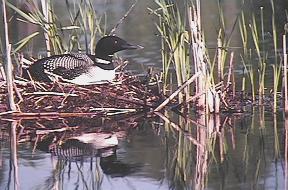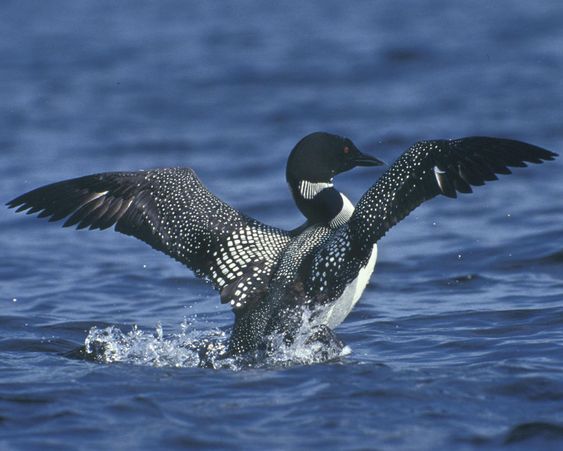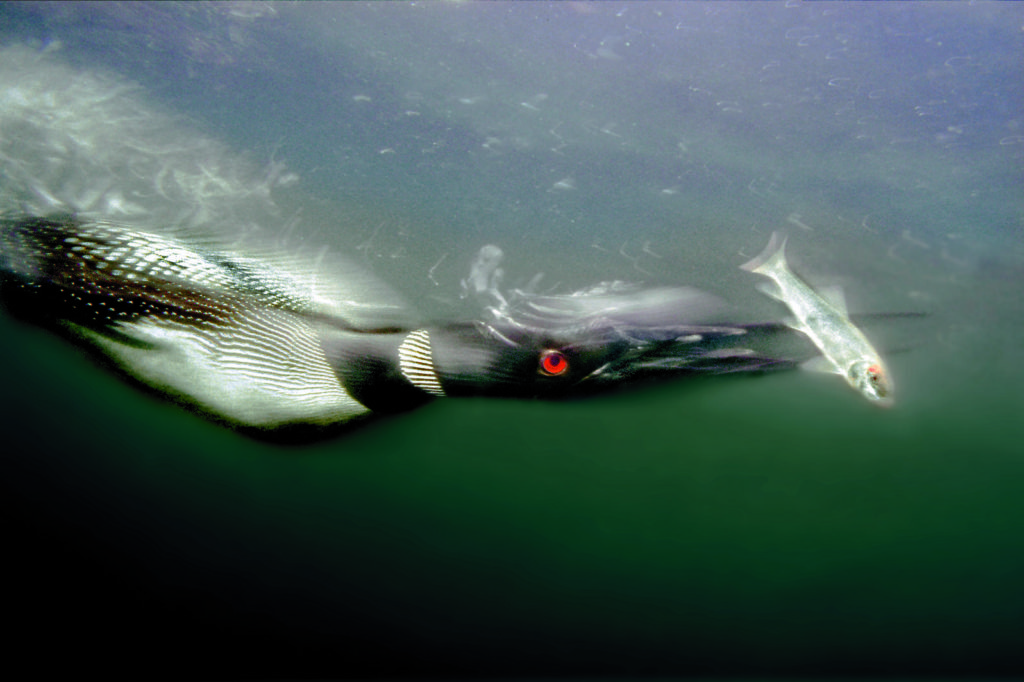by Doug Becker

Common Loons are not only remarkable, they’re totally unique. Though they’re frequently mistaken for a duck, scientists identify them as a species of their own. Common Loons’ breeding territory covers nearly all of Canada and Alaska, and winter migration brings them across all of the United States. All year, the Common Loon can be easily seen in the fresh and clear lakes of northern Minnesota, Wisconsin, Michigan, New York, and Maine. Loons are water birds. Most of their life is spent on the water except during nest building, breeding, and incubating eggs. Common Loons have long been a favorite of many. Their lonely call at night is well known, and seems to signify the beauty and spirit of crystal clear waters of lakes in the northern wilderness.

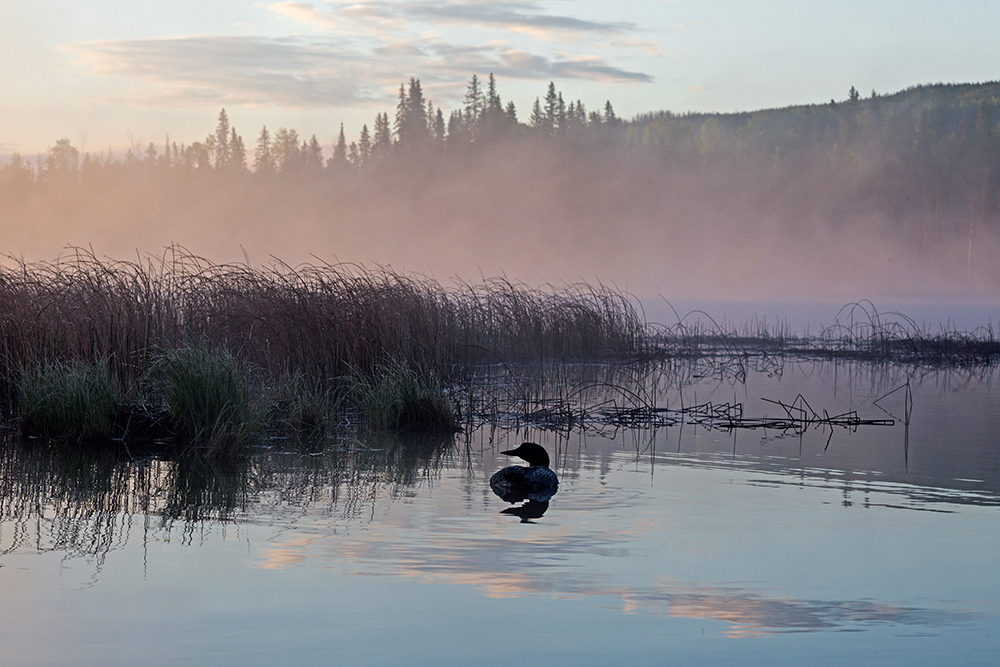
The male will select the nesting site, then both male and female do the nest building. Because Loons can’t walk well on land, they are vulnerable to predators and need a quiet, secluded nesting site near water’s edge. Dead vegetation and grasses make up the nest, then one of the birds will sit on it until the grasses conform to his body. The finished product is about 22 inches wide and simply looks like a clump of dead grass. If undisturbed, the nest will be reused the next season. Common Loons brood once each year with a clutch of 1-2 eggs. Incubation time is nearly a month, and nesting time is only 2 days. Safest place for the whole family is in the water!
In the middle of a quiet lake, the Common Loon can be quite conspicuous. They’re larger than a duck, and smaller than a goose. They are classified as a water-diving bird which means they dive for fish from the water’s surface and not the air. Unlike a duck, they float low in the water. Their solid bones make them less buoyant and better divers. The Loons’ summertime plumage is extraordinary. They almost seem tuxedoed in their intricate black and white plumage. Their large head and bill are jet black, they sport a dashing black and white striped collar, and have a beautiful black and white checkered back. On the other hand, the wintering Loon that migrates south and along all of our saltwater seashores turns a drab gray and white before returning north for breeding season. Even then, their long and low profile makes them easy to identify in the water.
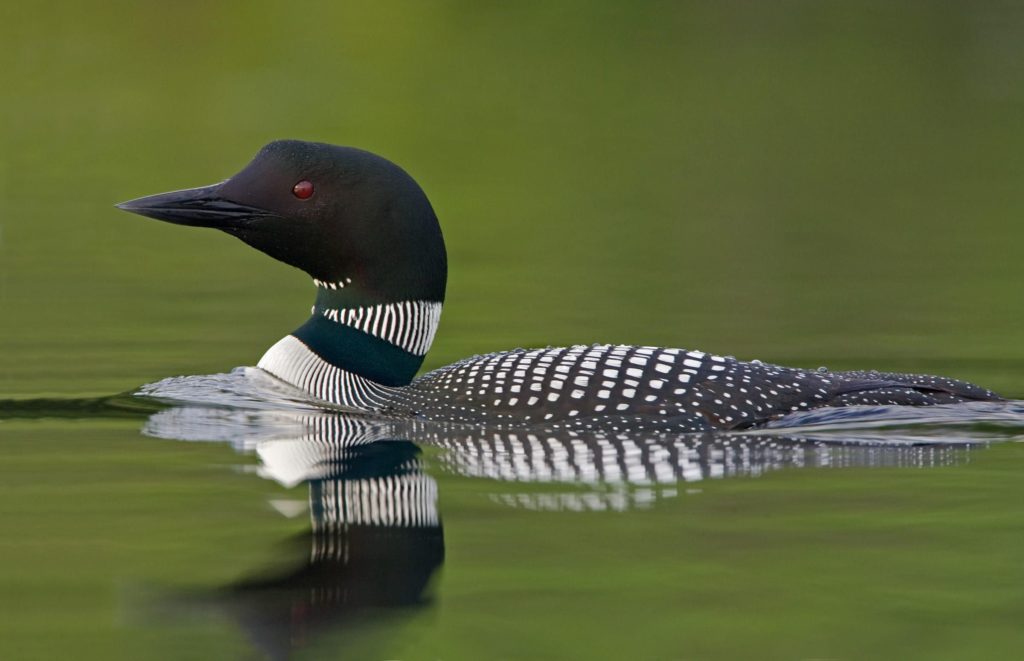

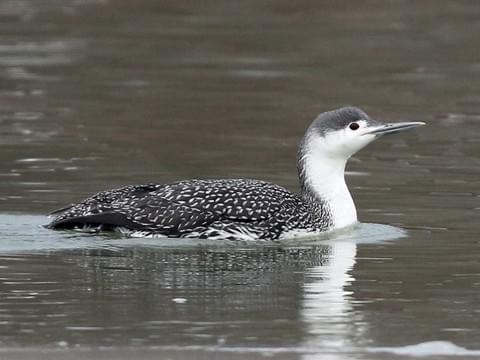
Contrary to common thought, Loons don’t necessarily mate for life. It seems they have a stronger bond with their territory than with their mate. As seasons pass, they know their territory better and better, and feel more secure. They don’t migrate together. One may fly off to the Gulf waters while the other finds the shores of Carolina. Comes springtime, they both return to their secure fishing and breeding territory. At this time, however, there’s not always peace in Loon Land. It’s not uncommon for another more aggressive male to chase the breeding male away, kill the chicks, and become the new mate to the female. The unfortunate male is left alone to find another territory and start all over. Loons live to more than 35 years, but I don’t know how many of these family breakups must be endured. Adult Common Loons will also attack baby ducklings, adult ducks, and even geese to protect their territory. Because Loons’ feet are much further back on their body than ducks’, they are quite clumsy on land, but are living torpedoes underwater. This makes their attacks very stealthy, though not always deadly.
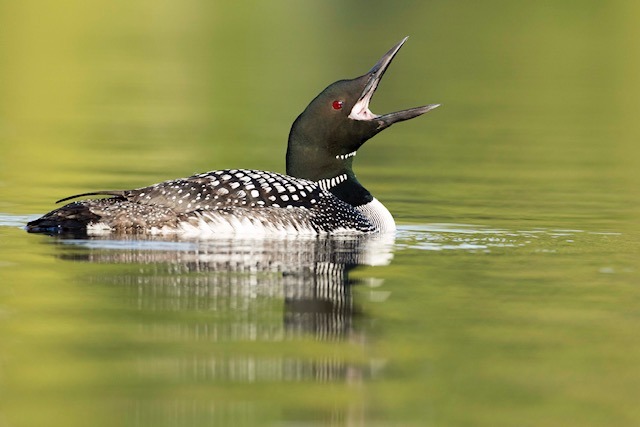

Common Loons are like airplanes. Because of their long and heavy body, they need at least 30 yards of runway on the water to take flight. Once in the air, their short powerful wings will take them to speeds of over 70 miles per hour! There have been times when a Loon lands in a pond that’s too small to fly from. This is a serious problem for the Loon. In the air or in the water, Loons are very athletic. With legs and feet that are so far back, they can propel themselves at high speeds and outmaneuver the fish that make up their diet. The Common Loon can dive to a depth 250 feet, turn 180 degrees in an instant, and stay under water for 5 minutes. These skills are needed as scientists have measured a family of four will consume 1,000 pounds of fish in 15 days.
Loons are not social, but they are vocal. They have four distinct calls that communicate with others at night. The tremolo is a call of alarm or warning. The yodel is a male’s territorial claim. Every male has his own yodel call. The wail is the call they make back and forth to locate each other, and the hoot is a short call to stay in contact with chicks or a mate. It’s not unusual to hear a chorus of calls as mates call together, or males identify their territory to others.
So, where did Loons get their name? Well, it’s as obvious as the name, itself. Shakespeare wrote about lunatics in the full moonlight. He later shortened the unfortunate word to loons, or loon. Apparently, some of the Common Loons’ behavior seems a little loony. Oh well, we think the same about our neighbor. And, what is a group of Loons called? Well, there’s more than one answer, but you’ll be safe with these names…..a “raft” of Loons, a “cry” of Loons, a “loomery” of Loons, a “water dance” of Loons, and my favorite, an “asylum” of Loons! Good Lord!!! And then, someone wrote that a group of loons is called the International Bird Rescue! I don’t know. I think the Common Loon is absolutely remarkable. I’m grabbing my binoculars. See ya out there!

